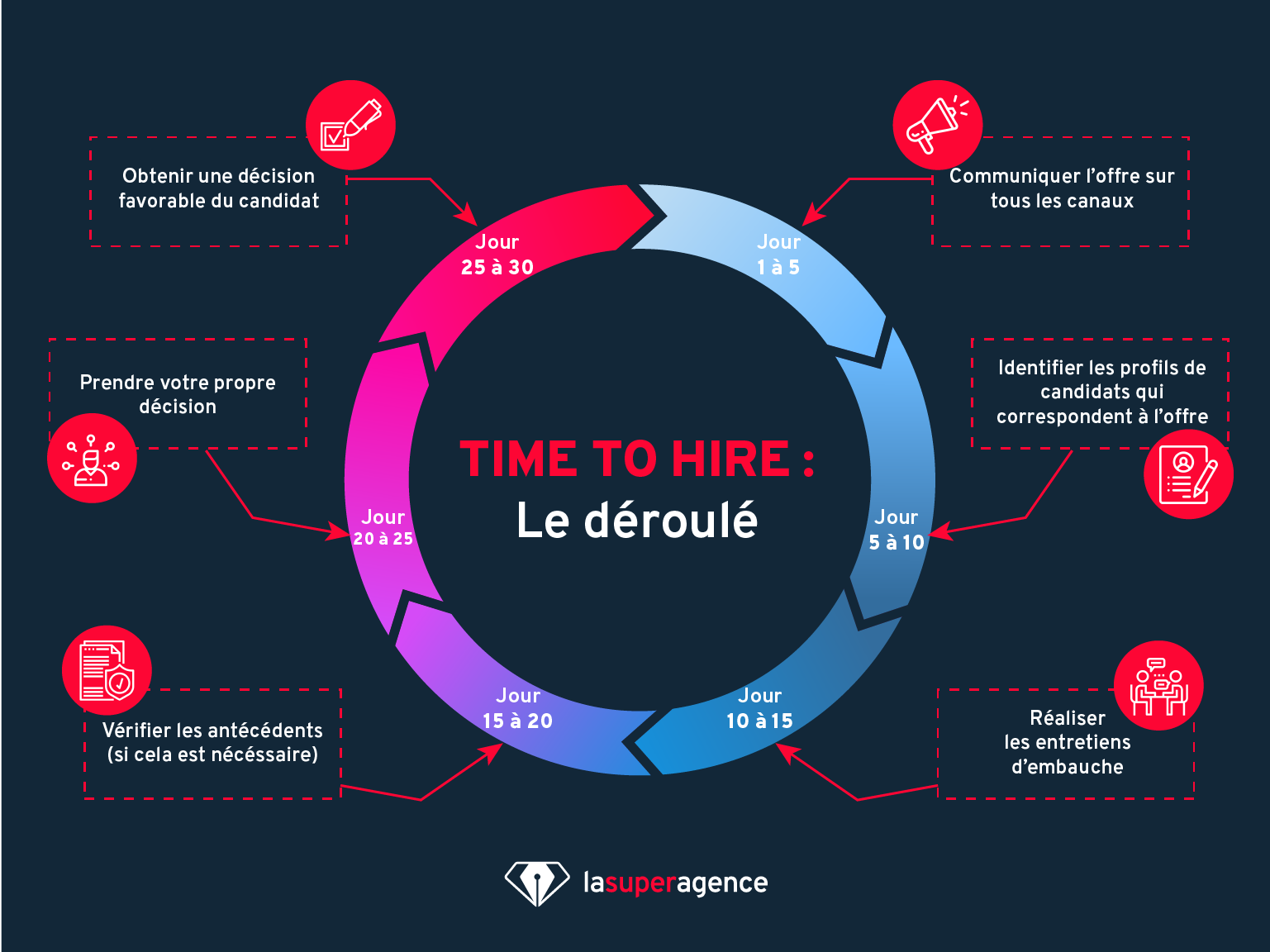Today, everything is measured, everything is counted, especially in the digital sphere.
Through meticulous tracking of metrics, strategic axes can be followed, to improve companies' marketing practices.
This logic also applies to recruitment.
Just as Inbound Marketing helps salespeople convert leads into customers faster, Inbound Recruiting drastically reduces your time to hire (the famous Time to Fill).
There are two reasons for this: the talent pipeline and the slow recrutement.
If you want to go straight to the conclusion, click here!
Time to Fill: time is running out!
In Q3 2018, there were nearly 142,000 job vacancies in France across all sectors. This represents as many difficulties for companies to fill these positions.
Often accused of inefficient recruiting practices or inaccurate talent acquisition strategies, the recruiter is under constant pressure to reduce the notorious Time to Fill to reduce the burden an open position places on his or her company.
"Time is running out, did you find me those 15 XP+++ Java/J2E developers I asked you for on Monday??"... when you don't even know where to find the horse that would eventually have a hoof under which to find even a junior.

Having a good Time to Fill is... not easy
In truth, the time spent hiring a candidate is a key metric, the measurement of which could benefit many recruitment strategies: hiring managers can then easily assess the resources needed, plan their budget, and thus improve their own talent acquisition strategies.
Calculating these recruitment metrics allows you to know which step takes the longest, and thus direct your resources differently, to more effective strategies.
But do you have time for that?
Time to Fill, a correct measure of ROI in recruitment
The calculation period is unique to each HR department. Therefore, it is crucial to start by determining this time to fill.
It can start as soon as a position is open, or as soon as an ad is online.
It can also end as soon as the recruitment is completed, or as soon as an offer has been made to a potential candidate, when it is accepted, or when the new employee starts in the position.
It's up to you, as the human resources manager, to determine the time period that works for you. But you will need to consistently keep the same reference period to always measure it the same way.
Time to Fill is generally equivalent to the total number of days of available and unfilled jobs.
Your company has an average time to fill, so you need to calculate this time for each job opening, within a defined time frame (a month, a quarter, a year, etc.)
Average time to fill = total number of days of a vacancy / total number of vacancies

Time to Fill is a fairly effective measure of recruitment effectiveness
Some recruitments may not have a time limit, so you must determine whether you are counting open days or weekends and holidays.
It will depend on your company's situation.
How to achieve your goals with Inbound Recruiting
Let's get back to the math.
It seems simple to implement, but you should keep in mind that this time depends on each type of post. A Time to Fill will not be the same from one position to another or from one period to another.
For example, during the holiday season, the volume of recruiting will be higher than when you want to recruit students for an internship, or more technical jobs.
Each recruitment has its own talent acquisition strategy, with a different time to fill.
To make it easy for you to establish your Time to Fill by position type, you can separate recruiting timelines into different segments, following the recruiting funnel by considering the time needed to:
-
Communicate the offer across all channels
. -
Identify the profiles of candidates that match the offer
-
conducting interviews for employment
. -
check the background (if necessary)
-
Make your own decision
-
obtaining a favorable decision by the candidate
These steps are summarized (slightly differently) in this hired site diagram.
 The incompressible Time to Fill is 30 days
The incompressible Time to Fill is 30 days
30 days in theory. In practice, for the most in-demand profiles, the average time is 63 days, or much longer.
An HR sourcing specialist recently told me that lead times are now between 4 and 8 months, and still "for the right firms."
That's like an eternity.
And forever is expensive.
Inbound Recruiting is both an original and effective solution to drastically reduce this delay.
In fact, by regularly delivering quality content to your potential candidates and then converting them into leads, you are able to have a true talent pipeline.
What's the difference with a fish tank? The traffic and the qualification of that traffic allows for continuous updating of the database, which limits data attrition.
The other fundamental aspect of Inbound Recruiting is that it is asynchronous. The person who will respond to your offer may very well have been exposed to your employer brand months or even a year or two before the need was even published by the operational. This is what we call Slow Recruiting (as opposed to a speed hysteria that generally brings neither enough profiles, nor good enough).
How do you implement the Talent Pipeline and the Slow Recruitment approach? Ask us!








